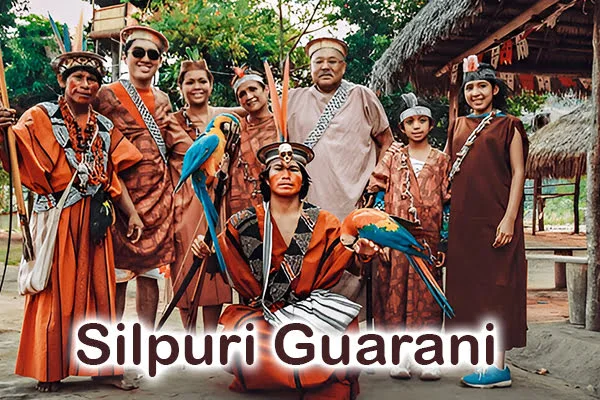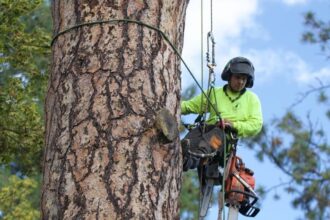Introduction to the Silpuri Guarani
Nestled deep within the heart of South America, the Silpuri Guarani people embody a rich tapestry of history, culture, and tradition. With roots that stretch back centuries, this indigenous group has carved out a unique identity in an ever-changing world. The Silpuri Guarani are not just keepers of ancient wisdom; they are warriors for their cultural survival amid modern challenges. Their practices and beliefs offer a glimpse into a way of life that is both vibrant and deeply connected to nature. As we delve into the essence of the Silpuri Guarani, we uncover stories of resilience, renewal, and hope—stories that deserve to be told and celebrated. Join us as we explore their fascinating journey through time while shedding light on their ongoing struggle for cultural preservation in today’s fast-paced society.
History and Origins of the Silpuri Guarani
The Silpuri Guarani are a vibrant indigenous group from South America, primarily inhabiting parts of Brazil and Paraguay. Their roots trace back centuries, intertwined with the rich tapestry of the Guarani-speaking peoples.
Historically, they thrived in lush landscapes, relying on agriculture and hunting for sustenance. The fertile land allowed them to cultivate crops like maize and cassava, forming the foundation of their diet.
Throughout history, they’ve faced significant challenges due to colonization and external pressures. These encounters disrupted traditional ways of life but also contributed to a unique cultural fusion.
Oral traditions play a crucial role in preserving their identity. Stories passed down through generations reflect not only their struggles but also celebrate resilience and connection to nature. Today, these narratives continue to shape the Silpuri Guarani’s understanding of themselves amidst modern influences.
Traditional Practices and Beliefs of the Silpuri Guarani
The Silpuri Guarani hold a rich tapestry of traditional practices and beliefs that connect them deeply to their environment. Their worldview is intricately tied to nature, where every mountain, river, and tree has its own spirit.
Rituals often honor these spirits through offerings and ceremonies. The community gathers for celebrations marking significant agricultural cycles or life events like births and weddings. These gatherings strengthen bonds among the people.
Language plays a crucial role in their identity. Oral traditions are passed down through storytelling, preserving ancient wisdom and moral teachings. Songs and dances also express their cultural narratives, often performed during communal festivities.
Healing practices reflect their connection to the earth as well. Traditional medicine relies on local plants, guided by knowledge accumulated over generations. This holistic approach underscores a deep respect for all living beings within their ecosystem.
Through these vibrant customs, the Silpuri Guarani nurture both individual identity and collective memory.
Challenges to Cultural Preservation
The Silpuri Guarani face multiple challenges in preserving their cultural heritage. Rapid globalization has led to an erosion of traditional practices. Young generations are increasingly drawn to urban lifestyles, distancing themselves from ancestral customs.
Land disputes add another layer of complexity. The encroachment on their territories disrupts not only their way of life but also the sacred spaces integral to their culture. This loss is felt deeply within the community.
Language plays a crucial role in identity, yet many Silpuri Guarani struggle to maintain fluency in their native tongue. As bilingualism becomes more common, there’s a risk that vital aspects of oral traditions may fade away.
External influences often dilute authentic expressions of identity. Cultural appropriation can commodify sacred symbols and rituals, leading to misrepresentation and misunderstanding among outsiders.
Efforts for Cultural Renewal and Revitalization
The Silpuri Guarani community is actively embracing cultural renewal. Local leaders and elders play a crucial role in this transformation, focusing on education as a key tool for revitalization.
They conduct workshops to teach traditional crafts, storytelling, and language to younger generations. These sessions not only pass down knowledge but also foster pride in their heritage.
Cultural festivals have become vibrant gatherings that celebrate Silpuri Guarani traditions. Music, dance, and art come alive during these events, drawing both the local community and outside visitors.
Collaborations with organizations help secure funding for projects aimed at preserving sacred sites and practices. By documenting oral histories and traditional ecological knowledge, they ensure that future generations can connect with their roots.
Social media platforms are also being utilized to share stories of the Silpuri Guarani culture beyond their borders. This digital outreach creates awareness while reinforcing connections within the community itself.
Impact of Modern Society on the Silpuri Guarani
Modern society has woven a complex web around the Silpuri Guarani. Traditional lifestyles face pressures from industrialization and urbanization. Access to technology, while beneficial, often dilutes cultural practices.
Young people are drawn toward modern careers and education. This shift can lead to a disconnection from ancestral traditions. The allure of city life presents both opportunities and challenges for their community identity.
Additionally, environmental changes impact traditional lands crucial for sustenance. Deforestation and agricultural expansion threaten their natural resources. These factors complicate efforts to maintain cultural inty.
Yet, there’s resilience within the Silpuri Guarani spirit. Many seek ways to adapt without losing core values. They navigate this modern landscape while trying to keep their heritage alive through storytelling, art, and communal gatherings.
The dynamic interplay between tradition and modernity shapes their ongoing journey in today’s world.
Future Outlook for the Silpuri Guarani Culture
The future of the Silpuri Guarani culture is a tapestry woven with hope and resilience. As younger generations embrace their heritage, there’s a renewed interest in traditional practices and languages.
Community initiatives are blossoming, focusing on education and storytelling. Workshops help to pass down ancient skills like weaving and herbal medicine. This hands-on approach not only fosters pride but also strengthens cultural ties.
Digital platforms play an unexpected role in this revival. Social media connects Silpuri Guarani youth with broader audiences, allowing them to share their stories globally. This increased visibility can lead to greater support for preservation efforts.
Collaboration with local governments supports land rights campaigns that protect ancestral territories. By reclaiming their spaces, the Silpuri Guarani strengthen both identity and sustainability.
Artistic expressions continue to thrive as musicians, painters, and writers find inspiration in their roots. The blending of tradition with contemporary influences creates unique cultural narratives that resonate today.
Conclusion
The Silpuri Guarani represent a rich tapestry of culture and identity that is both unique and deeply rooted in history. Their traditional practices, beliefs, and ways of life offer valuable insights into the resilience of indigenous cultures worldwide. As they navigate the challenges posed by modern society, efforts to revitalize and renew their cultural heritage are crucial.
The community’s determination to preserve their traditions while adapting to contemporary realities highlights their strength. The future of the Silpuri Guarani lies in balancing these two worlds—celebrating their vibrant culture while embracing change. With ongoing support for cultural initiatives and education, there’s hope that the spirit of the Silpuri Guarani will continue to thrive for generations to come.

















